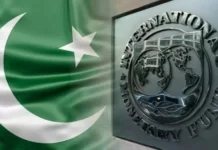The federal government proposed changing the current population-based formula for distributing divisible pool resources under the National Finance Commission (NFC) award. Planning Minister Ahsan Iqbal argued that the current formula, which heavily relies on population size, was “regressive” and should be replaced with criteria focused on climate adaptation and other performance indicators.
Speaking at a news briefing, Iqbal emphasized that population had been treated as an incentive rather than a disincentive, and suggested that the new approach would better reflect the need for climate resilience and social sector improvements.
He confirmed that the Centre would push for these criteria when the NFC meeting takes place in August this year.
The minister also questioned the devolution process under the 18th Amendment and the 7th NFC Award, which has been in effect since 2009. Iqbal argued that devolution had remained incomplete, with provinces failing to transfer responsibilities and resources down to the district level, despite prior commitments. He further highlighted that the growing size of provincial finances required a fully functional district government system.
On the subject of economic growth estimates, Chief Statistician Naeemuz Zafar defended the Pakistan Bureau of Statistics’ (PBS) growth forecast for the current year at 2.7%. He stated that the datasets used for the estimates were transparent and readily available on the PBS website.
Zafar acknowledged objections regarding agricultural output, noting that major crops represented only 18% of the agricultural sector, while the remaining 80% consisted of livestock, fisheries, and forestry.
However, Zafar conceded that the GDP growth rate would likely be revised in the upcoming review due to discrepancies between public sector development investment figures and the Ministry of Finance’s estimates. This revision would reflect changes in public sector development spending and updated livestock data based on the 2010 survey.
Minister Iqbal also raised concerns about the shrinking fiscal space for the Centre, with development spending falling to 0.8% of GDP, down from over 1.2% in previous years. He warned that after provincial shares were transferred, the Centre would be left with just Rs11 trillion, over Rs8.2 trillion of which would go towards debt servicing and defense expenditure.
He urged the provinces to share in expenditure, particularly in human development initiatives, pointing out that 40% of children in Pakistan are currently stunted. He also addressed the issue of India’s use of water resources, calling it a serious challenge and stressing that Pakistan must prioritize water sector projects, including dam construction.
Iqbal concluded by highlighting the government’s collective resolve to shift from crisis to stability and sustainable growth under the “Uraan Pakistan” vision and the 13th Five-Year Plan. He described the budget as a roadmap for recovery, resilience, and opportunities for all Pakistanis, with a focus on independent financing for development through agricultural growth and provincial initiatives like the Punjab Kissan Card.























